Sweet Sweet Safranbolu
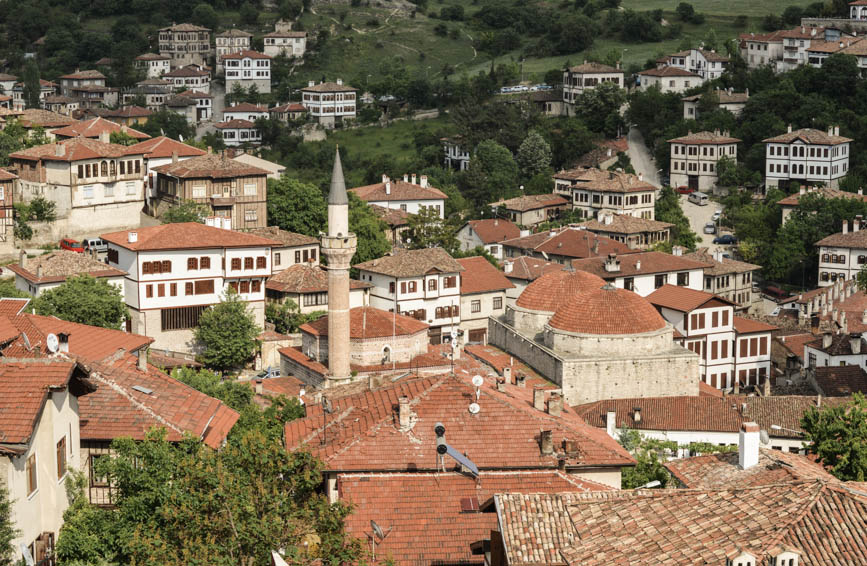
What do you do when you have a week of visa-waiting in Ankara? Why you go to Safranbolu, of course! Only a three hour bus-ride from Ankara, the UNESCO World Heritage site of Safranbolu makes a perfect little escapade from the city streets of the Turkish capital. Sometimes referred to as one of Turkey’s prettiest towns, Safranbolu is named after the saffron it was famous for producing and trading. It is also well-known for having impeccably well-preserved Ottoman era housing and architecture.
We begin planning our weekend trip towards the north, unaware that thousands of other Turkish tourists are doing the same. Monday is one of Turkey’s most important national holidays – 19th May, the day of commemoration of Atatürk; the founding father of modern Turkey as well as a day for recognising Youth and Sports. A busy day for celebrations.
Safranbolu is already a popular destination for cityfolk, but the long weekend meant that every room in town was booked. We decided to chance it anyway. The drive from Ankara to Safranbolu is gorgeous, green hills and valleys until suddenly a massive iron and concrete structure appears, puffing out dark smoke from its rusting walls and bridges. You have arrived in Karabük, the 1930s home of the iron and steel industry in Turkey. In turkish, “Kara” means black and the imposing structure looming above us seems to have been appropriately named. Not what you would expect on your way to a little picturesque town and reminding me once again of the recent Soma mining tragedy. All over Turkey, factories and plants can be seen in some unexpected places, in plain sight near towns, between roads, but this was the biggest one witnessed yet. The bus speeds by quickly, but the enormous yet fragile structure leaves me thinking about the working conditions inside and how easy it is to forget about how industry operates when it is hidden from view.
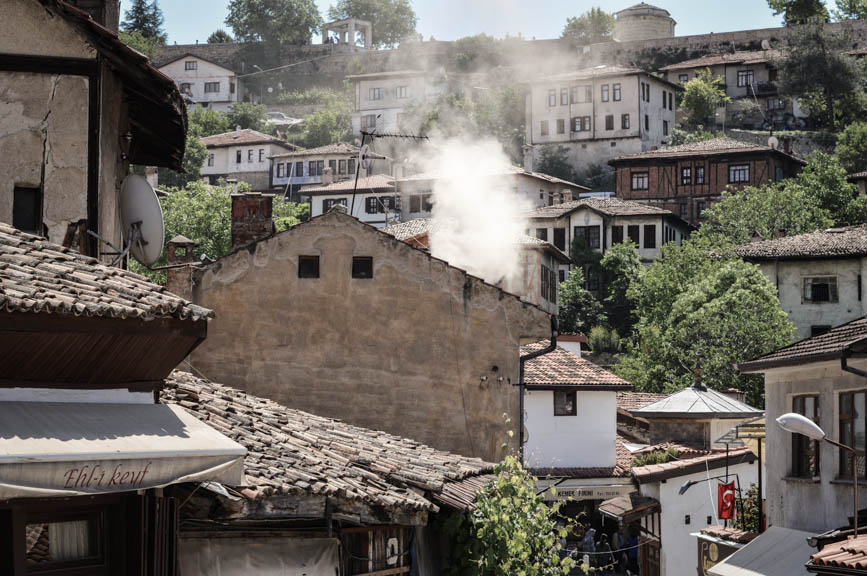
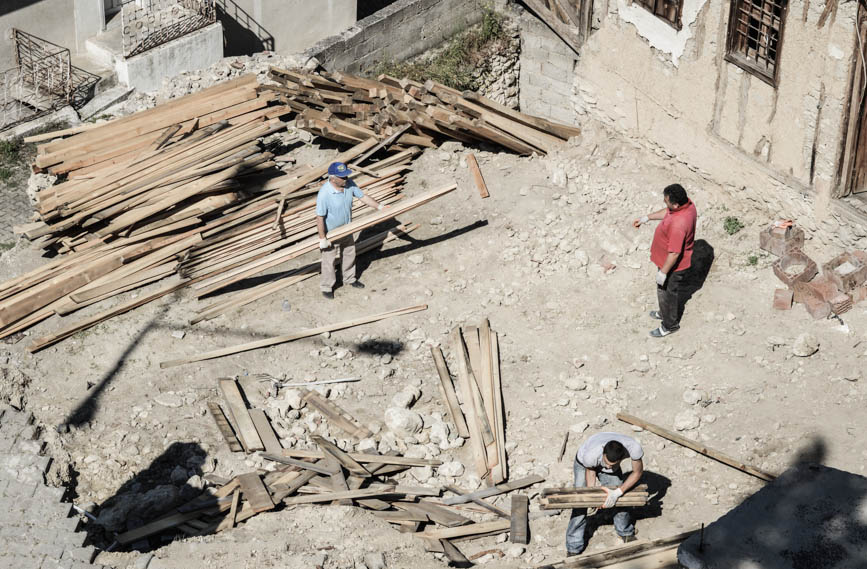
The bus continues north and we soon reach our destination. The old town of Safranbolu fills a deep rocky ravine surrounded by the rather large new town over-looking it to one side. It is indeed fairy-tale-like, the white and dark chocolate architecture reminding us of Berat in Albania. We start descending the valley on foot towards the old town through it’s tiny stone-paved alleyways, wondering where all these tourists supposedly are, there is no one in sight and all we could hear were birds flying overhead and a river rushing below us. We finally find someone to ask for directions and they just say “down, down!” and there it is, the alleyways quietly lead into the old bazaar where everyone else seems to have been hiding.
This was our first encounter with mass tourism turkish-style as well as our first stay in a windowless room. The influx of people to the small town meant that we did not have many options left, it was between a 100€ room or an affordable storage room with a furnace pipe running through its centre. In we go into the storeroom! Though we might be getting a bit old for dark and smokey windowless rooms. I am still wondering what made it all so itchy.
It is a miracle that so many of these buildings are still standing, some as high as four floors and the wood and stone weaving still intact. While several “satilik” (for sale) signs are spotted, many houses are being painstakingly renovated and restored, most of it by hand.
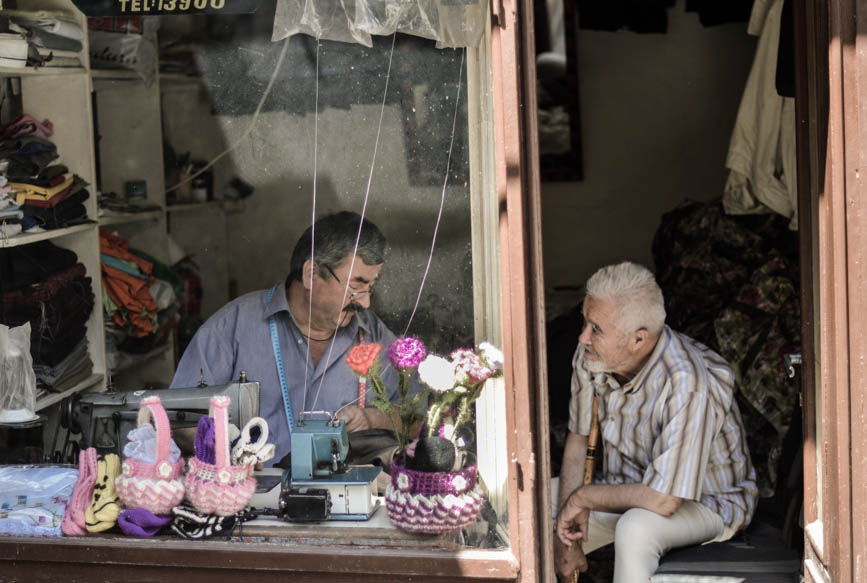
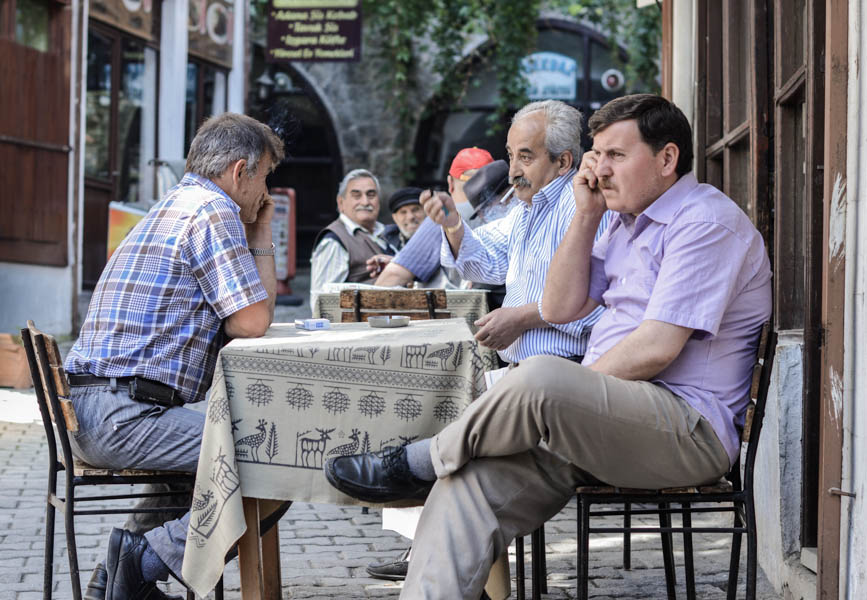
While there were definitely tourists, some even being driven up the cobblestones in golf carts to their boutique hotels at the top of the hill, there were not many foreigners around with the exception of korean and taiwanese travellers. Safranbolu must be big in Taipei. Locals seem undeterred by the wave of curious eyes and appetites invading their town and carry on with their daily routines – eating piping hot Simit from the fırın (oven/bakery) for breakfast- the turkish version of the sesame bagel and drinking copious amounts of çay (tea) while playing backgammon. Backgammon appears to be a national sport in Turkey and you’ll find that numerous çay bahçesi (tea gardens) provide sets of the classic game for their frequent and loyal customers. Further down the road, delicious little espresso-sized pots of turkish coffee were being prepared over hot coals and sand. Barbeque coffee, anyone?

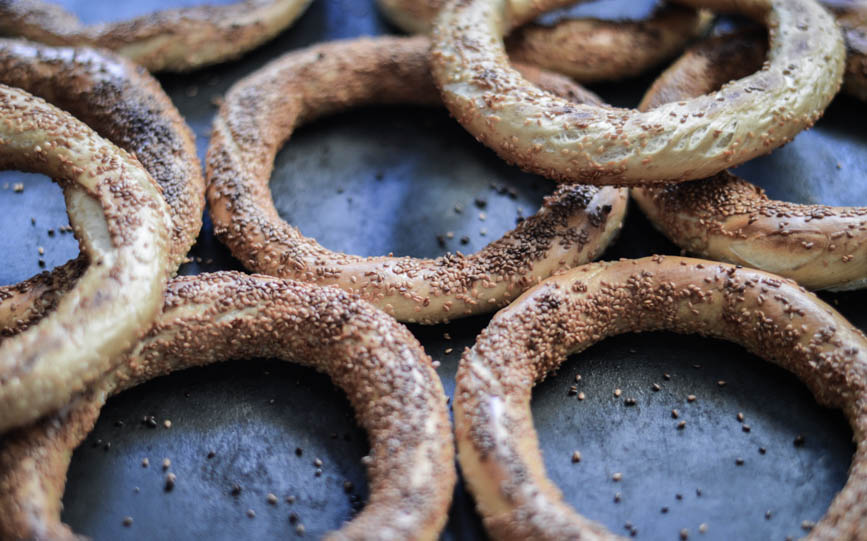
Safranbolu has quite the reputation for its cuisine, including its own version of stuffed pita bread – the Safranbolu bükmesi, thin bread wrapped around a mixture of onions, spinach and minced meat, then brushed with melted butter once out of the oven. Most people do not leave without trying a plate of Cevizli Keşli Yayım – delicate matchsticks of homemade pasta, cooked in roasted meat broth and topped with a creamy walnut sauce. There is also the staple of mantı – a turkish version of ravioli, filled with yoghurt and mint, sometimes with the addition of minced meat, then served with spiced hot butter and herbs or some tomato paste. Being familiar with the chinese mantou and the tibetan or nepali momo, it was interesting to see a dish which had travelled so far west, indeed Safranbolu is a town familiar with travellers. It has a famous caravanserai – the Cinci Han. Topped with a multitude of mini chimneys, this large structure was built to house long-distance travellers on their journeys through town, the original Silk Road adventurers and traders. The open courtyard used to be a place for their rest and recuperation, now tourists pose behind life-size cardboard cutouts of the pioneers.
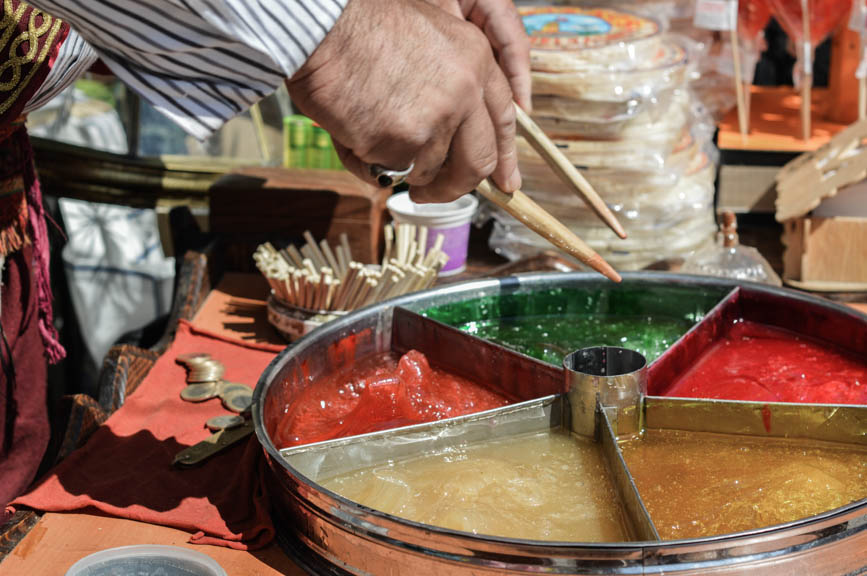
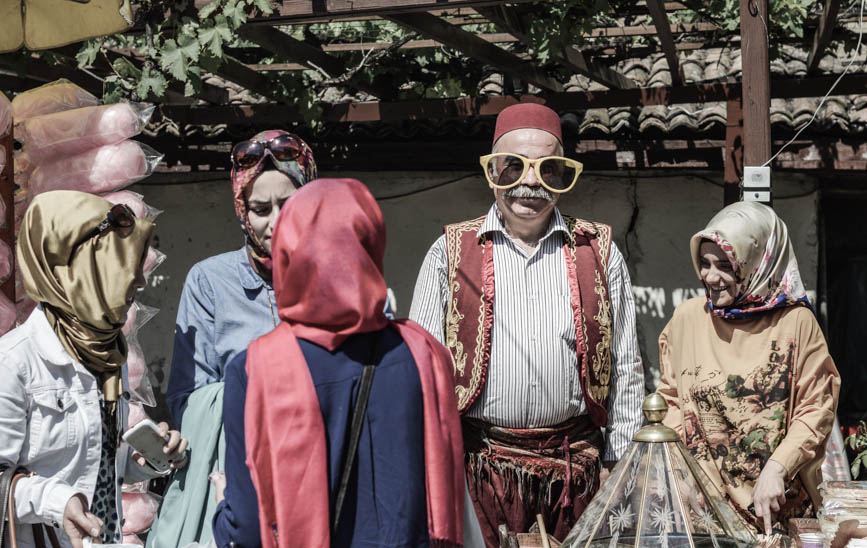
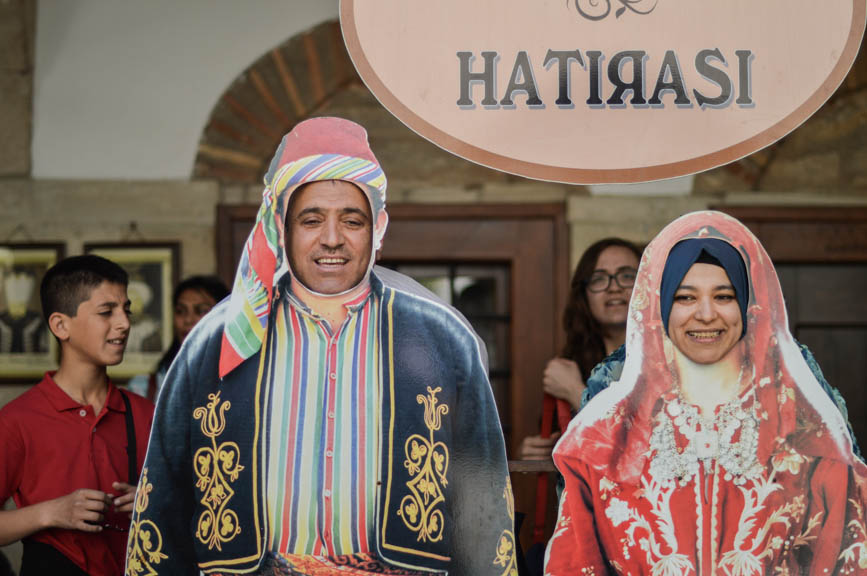
When the tour buses ascend up the valley at the end of the day, they are not just loaded with satisfied visitors, they are also carrying precious goods – sweets, sweets, sweets. Most people leave laden with bags to satisfy every sweet tooth – walnut baklava, caramel peanuts, dried fruit mixed with neon-coloured candy, sesame based helva laced with chocolate paste. The real star of the show though, the reason some flock to Safranbolu, is lokum.

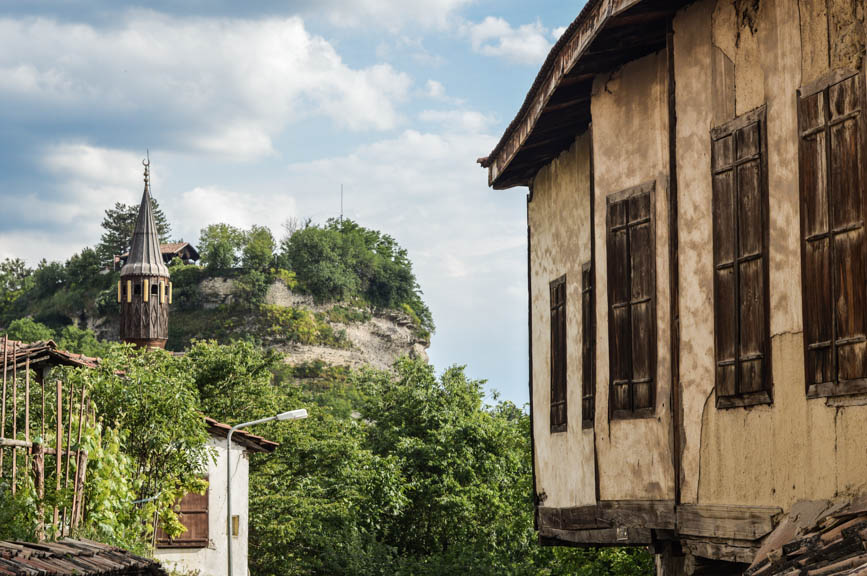
Lokum are morsels of chewy sweetness often served in the form of little cubes, also known as Turkish Delight. The story goes that in the late 1700s, the sultan was tired of having his teeth crack on traditionally hard candy and demanded to be fed a soft bonbon. The imperial confectioner at the time – Ali Muhiddin Hacı Bekir set about experimenting in the kitchen and came up with a mixture of sugar, cream of tartar, cornstarch and rosewater and let it set. Coated in powdered sugar and cut into bite-sized chunks, it delighted the sultan’s palate. Initially referred to as Rahat Lokum, the “comfortable morsel”, it became an instant hit and still is to this day.
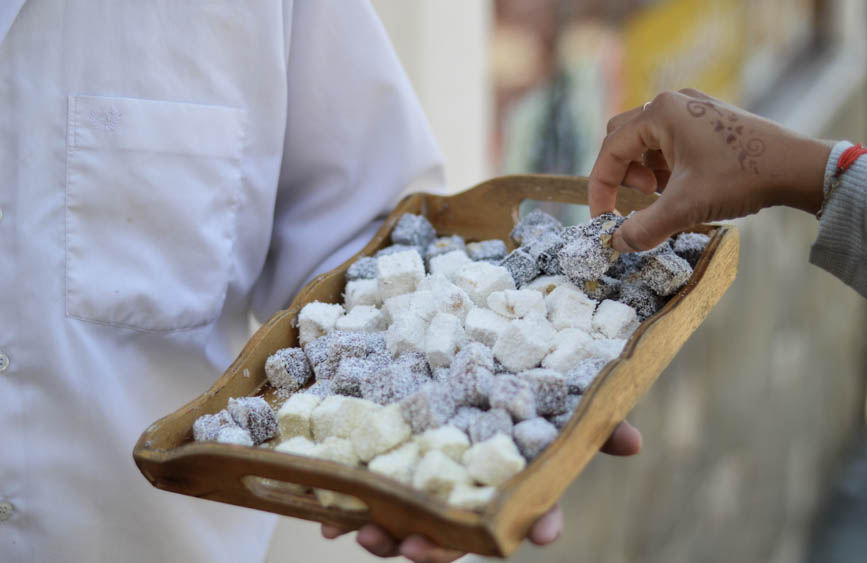
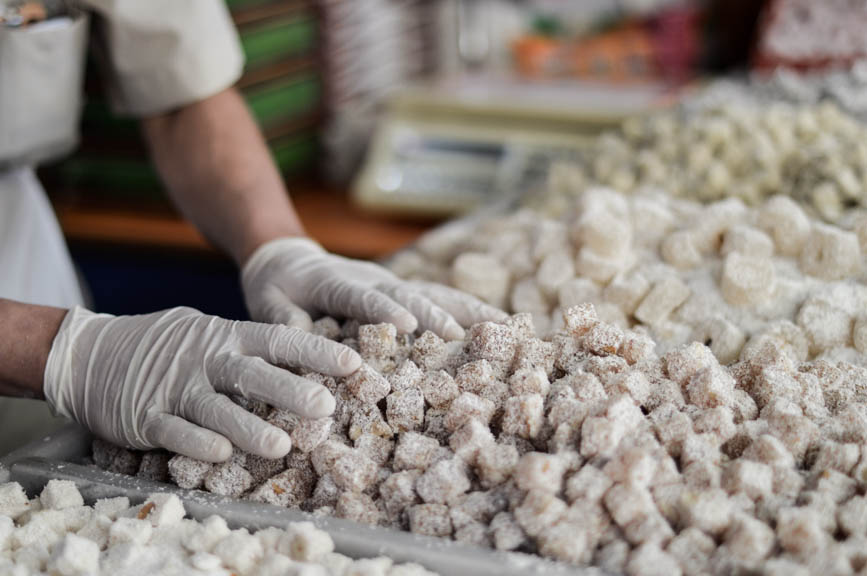
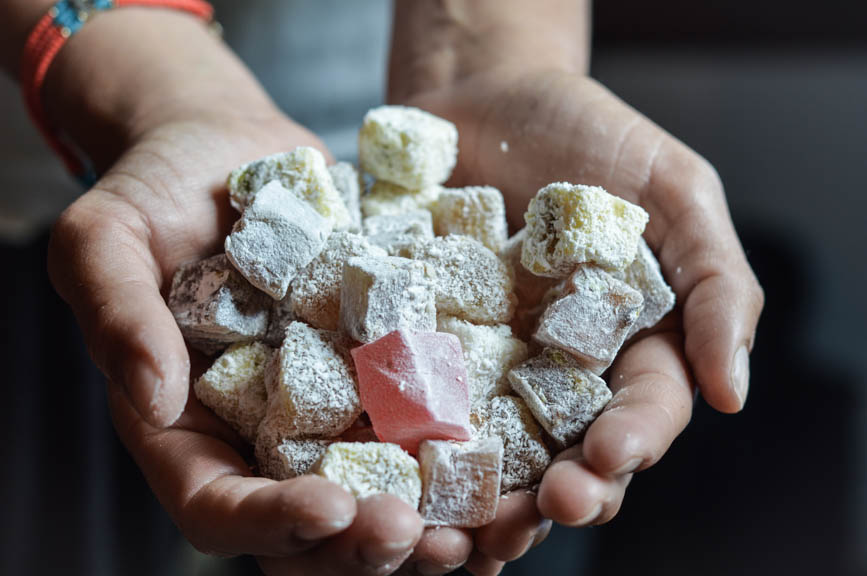
Until now, my encounters with turkish delight had been limited, often overly sticky and tooth-achingly sweet. This lokum however, Safranbolu’s specialty morsels were addictive. Delicate and just slightly elastic, these mild coconut dusted (not sugar coated) cubes were like soft pillows of suggestive flavours – clotted cream, walnut, pistachio, fig, rose and of course pale-yellow saffron. It was the first time I tried a chocolate one and the only time we have had an edible rose one. By the time we settle to buy a box, we have been stuffed with tasting samples, trays of lokum await in the narrow alleyways, several of them handed out by giddy students in their summer jobs. We leave happy with our carefully selected gems, eating them at intervals to make our stash last as long as possible, but much like the Pringles ad goes, once you pop you can’t stop and I think we even had them for dinner one night.
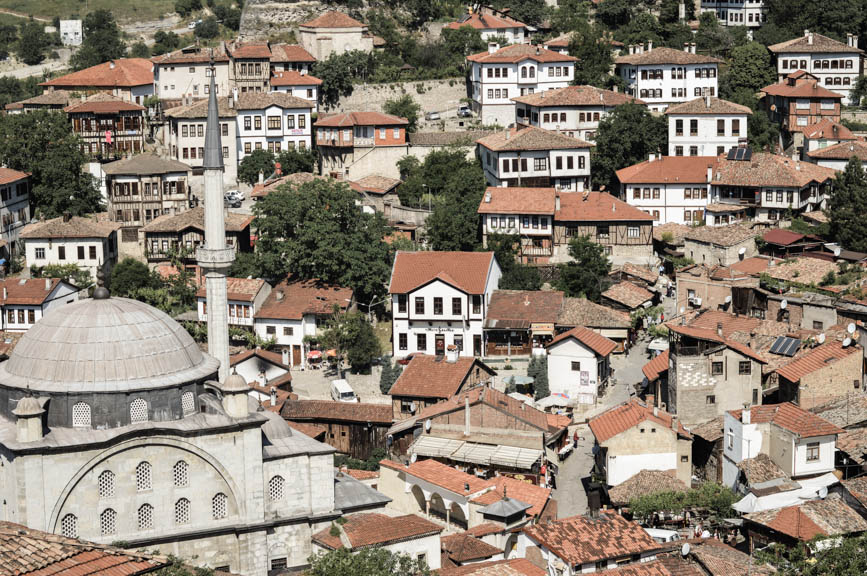
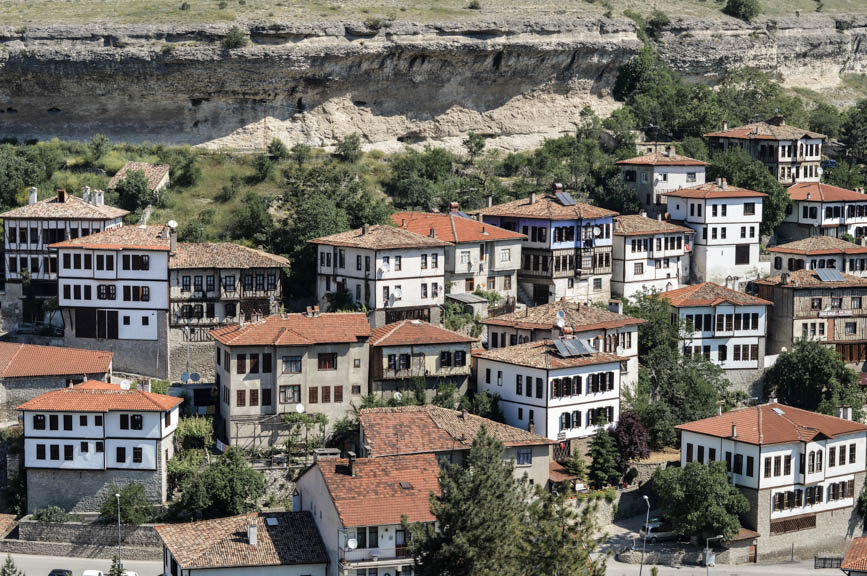
As the long weekend slows to an end, the town’s crowds thin out as people shuttle back to Ankara or Istanbul. What remains? Women’s tour groups and us. Climbing up the valley peak to get the best view of the town, we are greeted by pools of women armed with their mobile phones and cameras to capture the beauty of Safranbolu as they follow their tour guide around the viewpoint’s cafe.
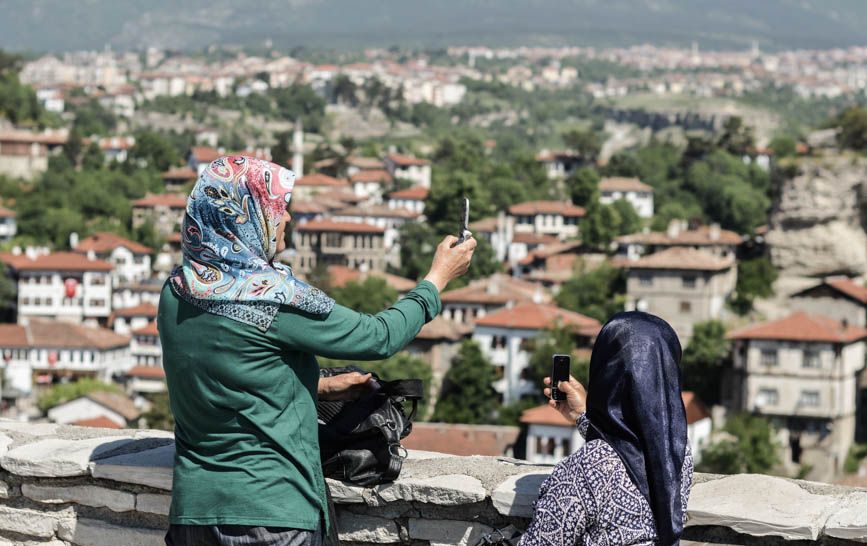
Safranbolu may not have been on our initial itinerary, but it gave us what turned out to be a storybook-step back in time and a sweet sweet weekend.







2 Comments
tammy
June 5, 2014Another interesting read! Thank you!I can imagine a piece of manti or turkish delight jumping in my mouth!Yum!
Nada
June 29, 2014Wow…sounds like a very interesting city and definitely has my mouth watering! Love the snapshots!!